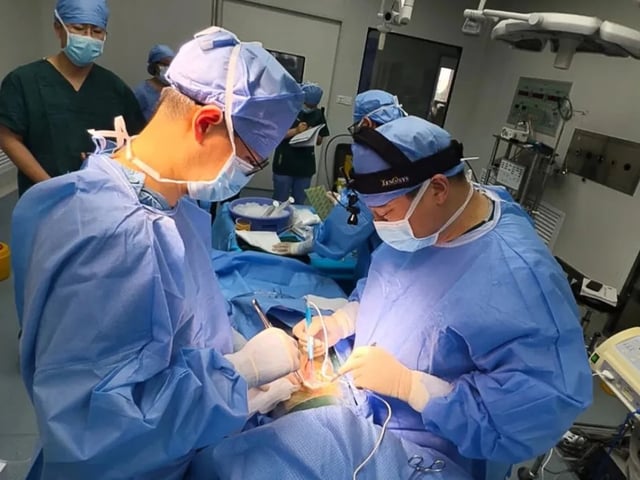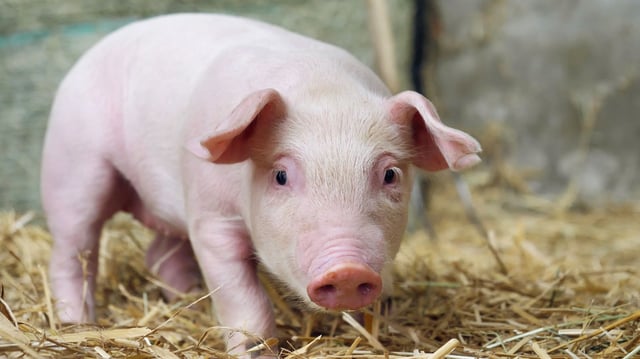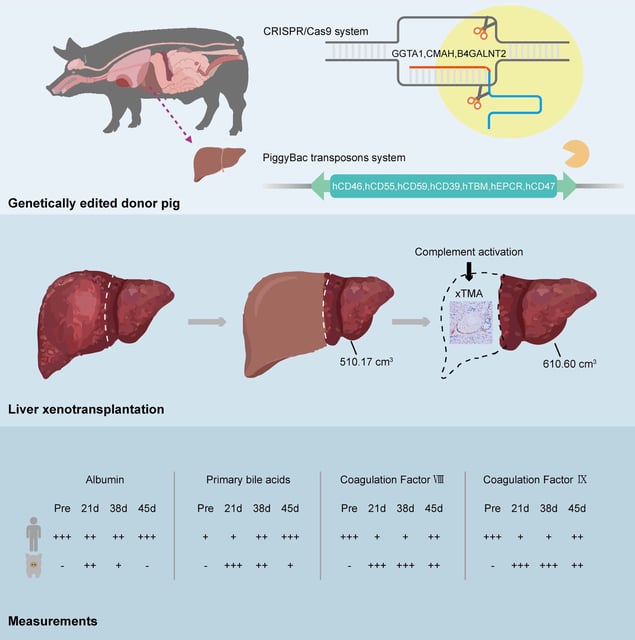Overview
- The Journal of Hepatology reports a Chinese team implanted an auxiliary graft from a 10‑gene‑edited Diannan miniature pig into a 71-year-old man in May 2024.
- The porcine liver produced bile and key synthetic proteins for about a month with normal vascular flows and no hyperacute or acute rejection.
- Surgeons removed the graft on day 38 after xenotransplantation‑associated thrombotic microangiopathy developed, which was managed with eculizumab and plasma exchange.
- The patient’s native liver partially regenerated; he later died on day 171 following repeated upper gastrointestinal hemorrhage.
- Editorial commentary frames the result as proof-of-concept for temporary hepatic support during organ shortages, while urging rigorous trials and solutions to coagulation, immune and safety risks.



